If you can walk for ten minutes, you can visit a beach without stepping foot in a car.
Multiple beaches, actually.
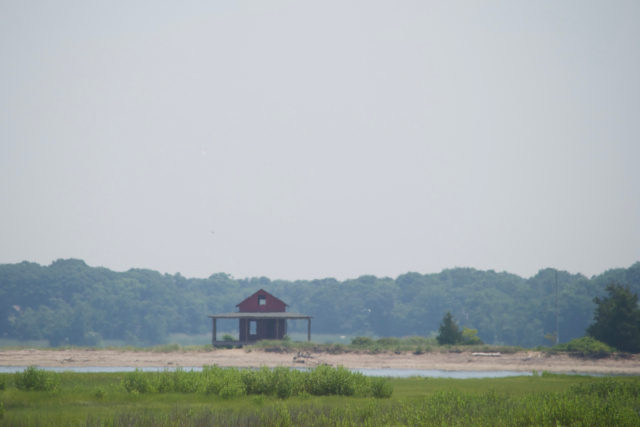
Arriving at the Guilford Station, you can intuit your way.
Go south to find the shore.
Either follow that road to the end, and see water but no sand, or choose where to change direction based entirely on a street name: Seaside Avenue.
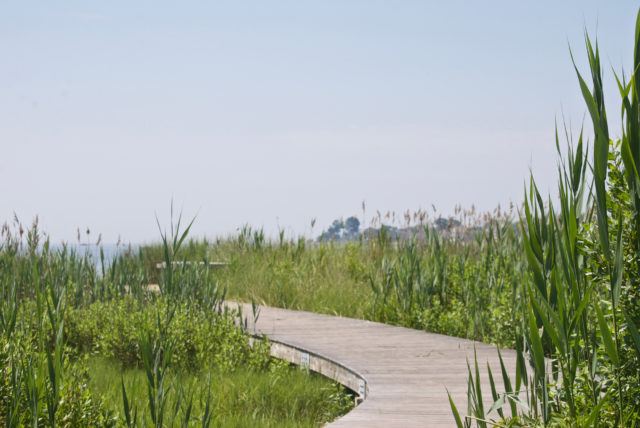
Enter Chittenden Park, a place that at a glance appears to be a standard town park: soccer field, bocce courts, a few places to sit.
Walk across the lawn, south, until you see a path.
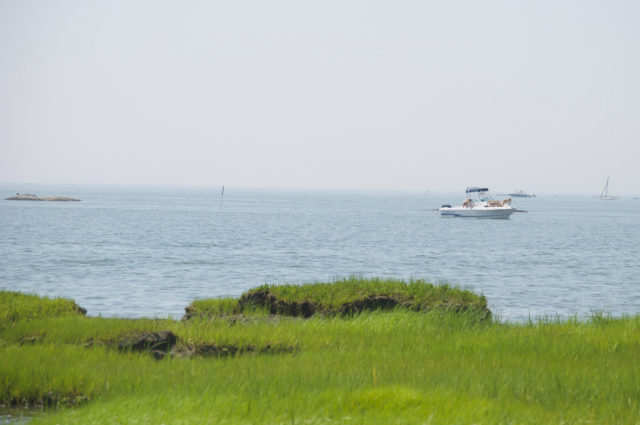
The short boardwalk leads to a small strip of sand. It’s as good a place as any to look for shells and watch the boats, including some that seem to contain only dogs.
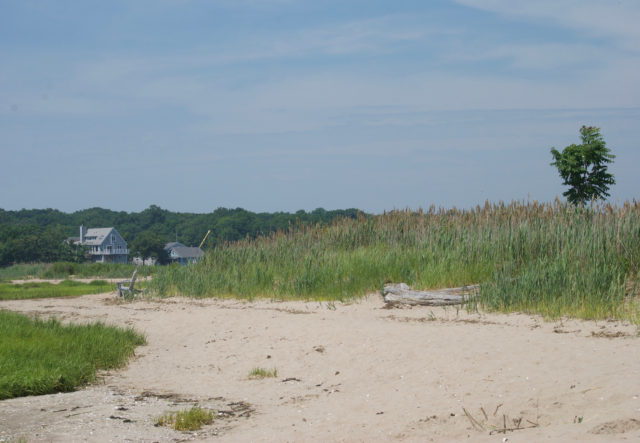
There are benches on the boardwalk, two chairs, a few logs on which to sit. Maybe you don’t find the shrieks of children romping on the beach to be gleeful — then this is a nice hidey-hole for fellow grumps who only want to listen to the birds and relax without fear of getting smacked in the face by an airborne plastic pail.
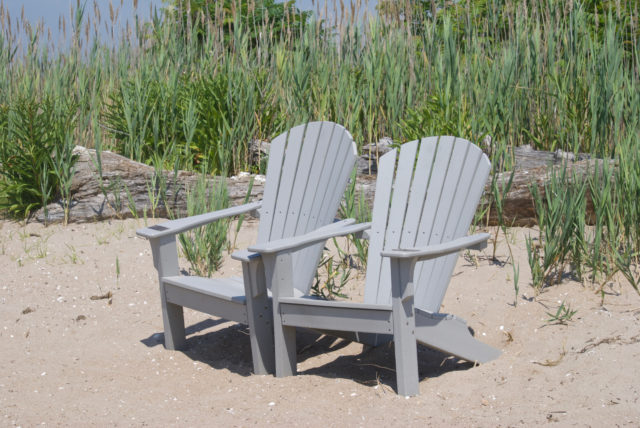
There’s no gatekeeper. No fees.
There’s also no lifeguard, so this is not the place to do anything more daring than dip your ankles in the water. . . and if you’re not a swimmer anyway, then that’s enough.
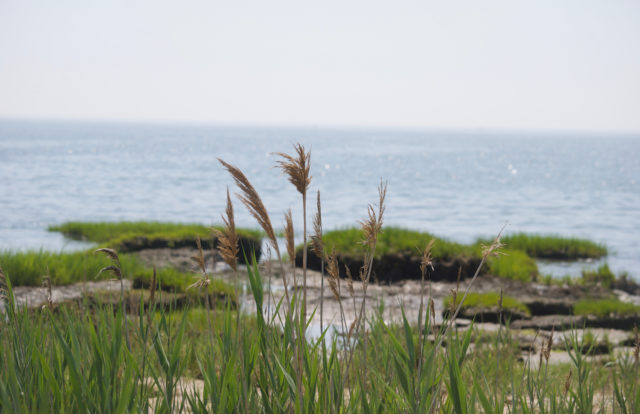
This spot is where the West River joins Guilford Harbor — Long Island Sound.
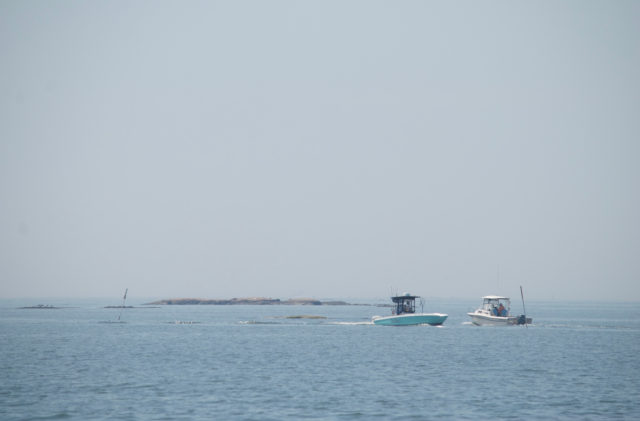
This walk shows off the salt marsh habitat; there are apparently 250 acres of undisturbed tidal wetlands in this area of shoreline and along the town’s West and East rivers.
There are also several new housing developments awfully close to the shoreline, which is thoroughly cringeworthy given our reality. (Sunny Day flooding is not unique to Miami)
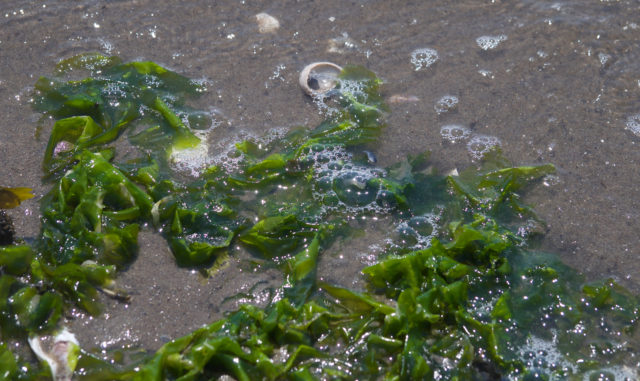
But if you face a certain direction, you see none of that.
This is a survival skill we may need more and more: being able to temporarily pause the flood of distress so that we can continue to fight from a healthy, not frayed, place.
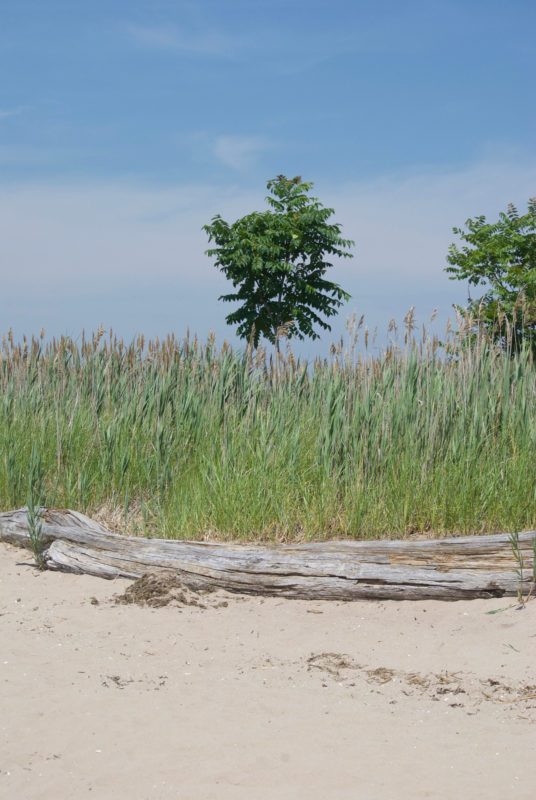
Increasingly, I notice where birds are and are not.
This is a spot.
They are here because this habitat feeds them.
What do they eat?
There are berries, sure, but there are also mosquitoes.
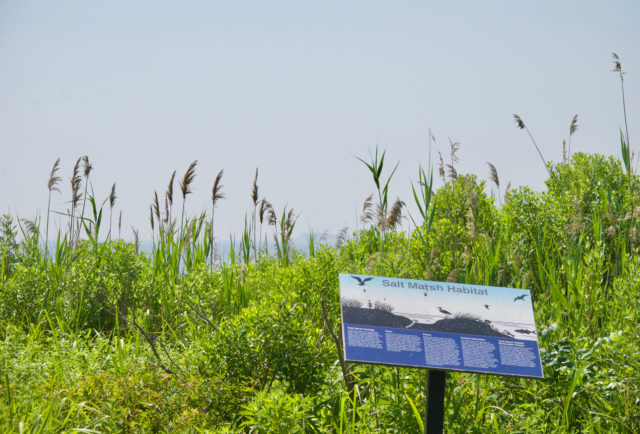
Chittenden Park is not only a semi-secret beach; it’s also the southern gateway to the New England Trail — the name given to 215 miles of four mostly contiguous trails: Metacomet-Monadnock, Metacomet, Mattabesett, and Menunkatuck.
This portion — the Menunkatuck Trail — is 16.7 miles and passes through Guilford’s train station. This year, 2022, marks the eighth birthday of the boardwalk at the trail’s southern terminus.
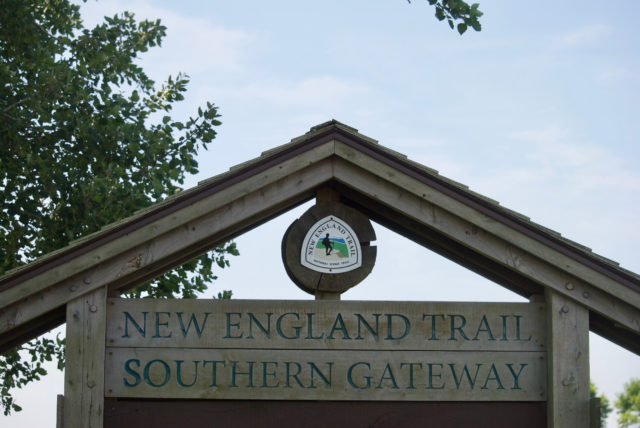
If this tiny bit of sand wasn’t enough for you, then exit Chittenden Park and continue south on the sidewalk, walk about two minutes, and cross the street to Jacob’s Beach.
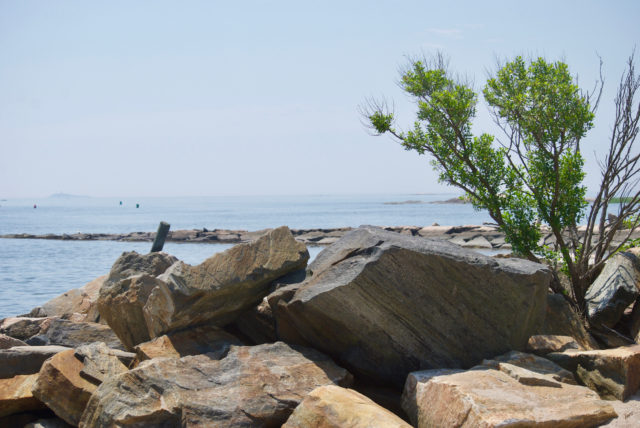
This is where you go if you don’t want to be alone.
The benefits? There are lifeguards, indoor plumbing, and water fountains.
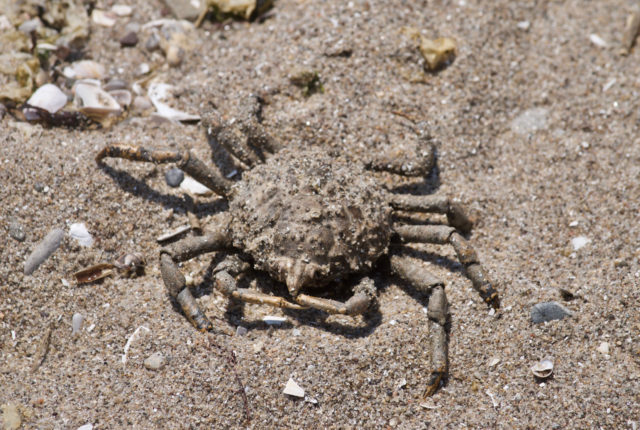
You can take in the views of Grass Island or just be amused by what’s underfoot.
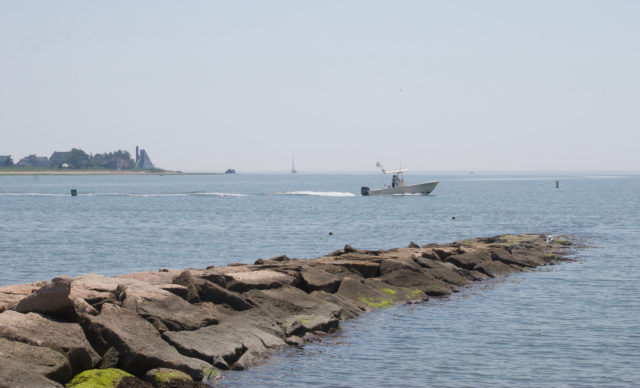
Pouring one out for all the people who have these weird purity tests and end up missing out on so much joy. You know the type. The ones who say shit like “Decaf isn’t coffee,” “E-bikes are cheating,” and “Connecticut doesn’t have real beaches.”
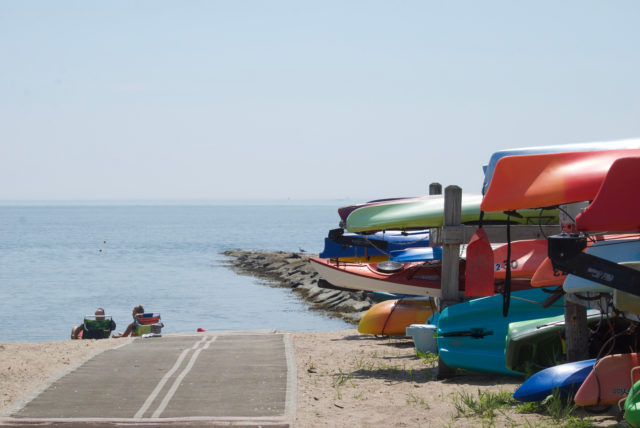
That’s sand and salty water ahead.
Looks like a beach to me.
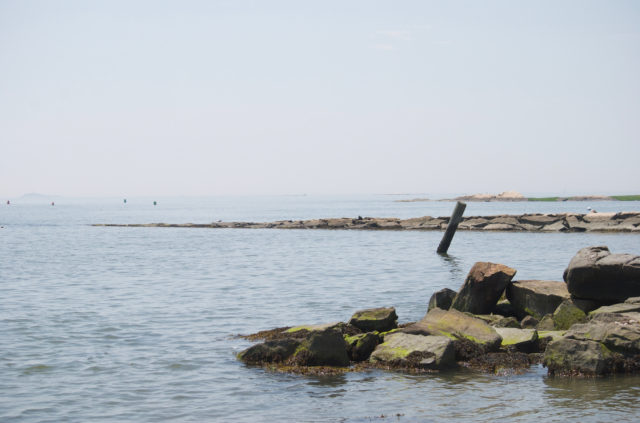
But if those folks want to act like visiting a beach requires driving for hours on the Jersey Turnpike or sitting in ridiculous stop and go traffic, let them.

It’s possible to enjoy the small places, the ones that aren’t household names to anyone beyond residents of that town. There’s nothing wrong with town parks and beaches, and land trusts.
But eventually, when your sunscreen has entirely melted off and you’ve been scolded by the lifeguards for walking on the jetty, you may want to leave the beach.
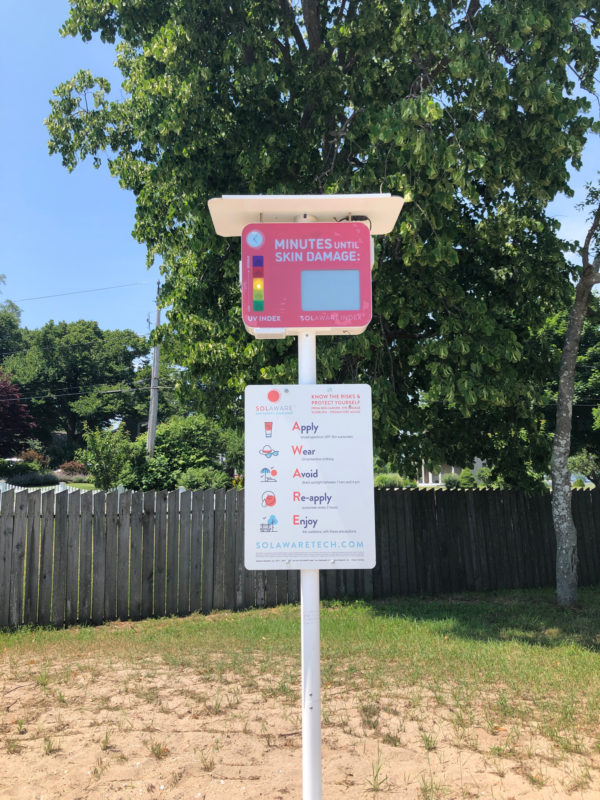
Then what?
Retrace your steps to Whitfield Street — new or old school — and admire the buildings along the way.
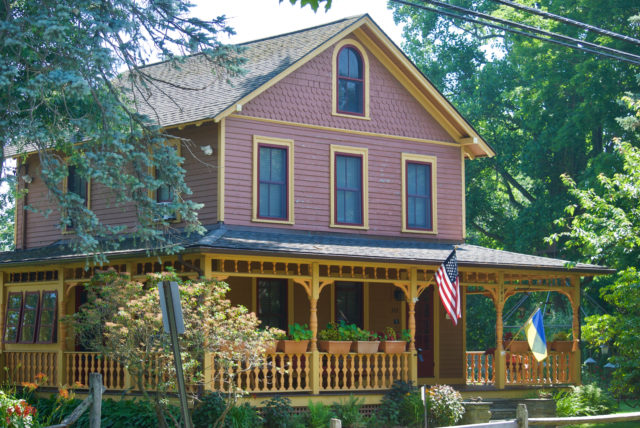
A tip I learned from The Size of Connecticut is that when you are visiting a new place and want to see the prettiest parts of it, one trick is to figure out if there’s an historic district or listing of old buildings. It may not include everything, but it’ll give you a starting place — important if you’re not visiting for a full week.
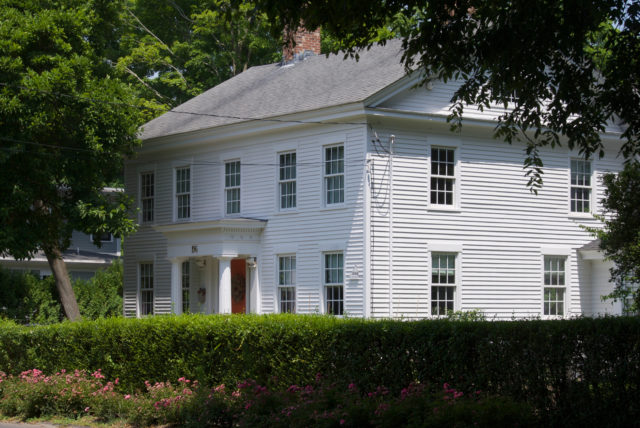
And you could come out for a week and do nothing but outdoorsy things. There are ten Witness Stones, lots of nature preserves, self-guided tours. . . and more of this opens up if you’ve brought your bike or decide to hop on the bus.
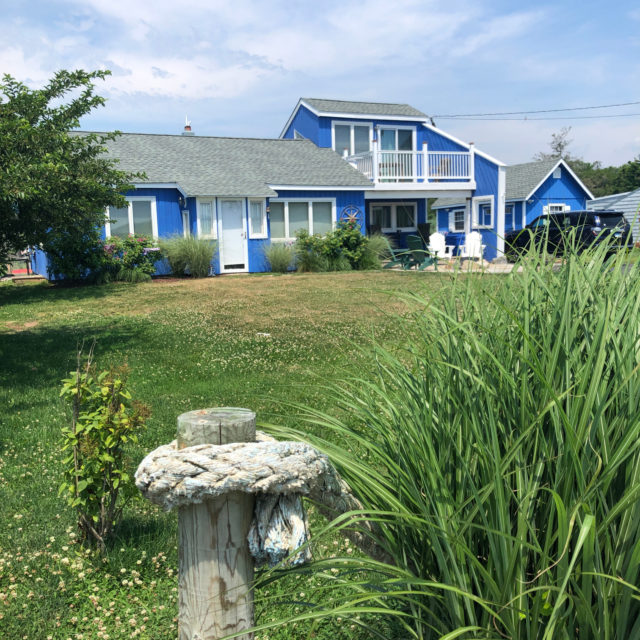
Or, instead of creating a plan, you can see how far your legs will carry you before you start begging to get beamed up.
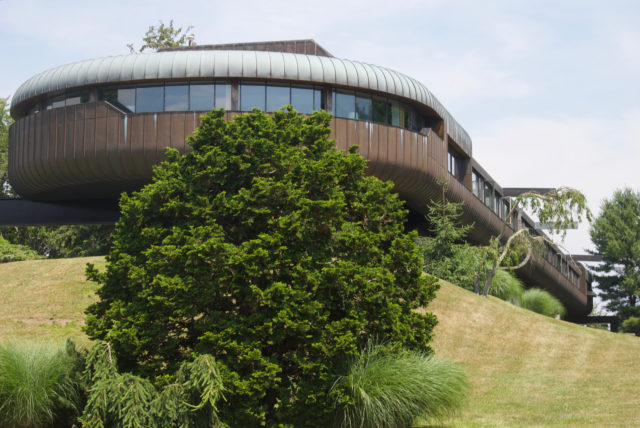
The spaceship is viewable from the New England Trail, as is the Henry Whitfield House, which is claimed to be the oldest stone house in New England and oldest house in Connecticut.
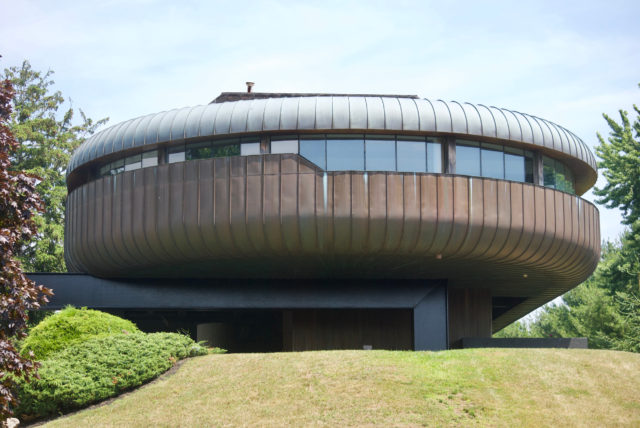
The Henry Whitfield House was created with the aid of indigenous labor on land that was transferred to colonizers from the Menunkatuck, with Shaumpishuh, a female sachem, representing them in the negotiation.
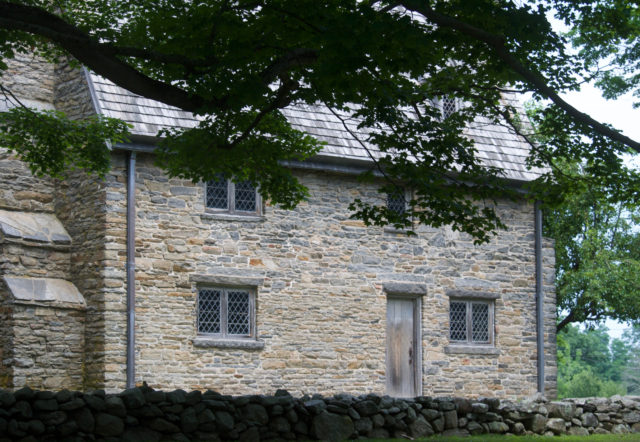
There have been a slew of archaeological digs on the site since the 1960s, led by various colleges and organizations. Materials recovered have included a ceramic toy soldier dating back to the early 19th century, clay pipes, and European-made ceramics.
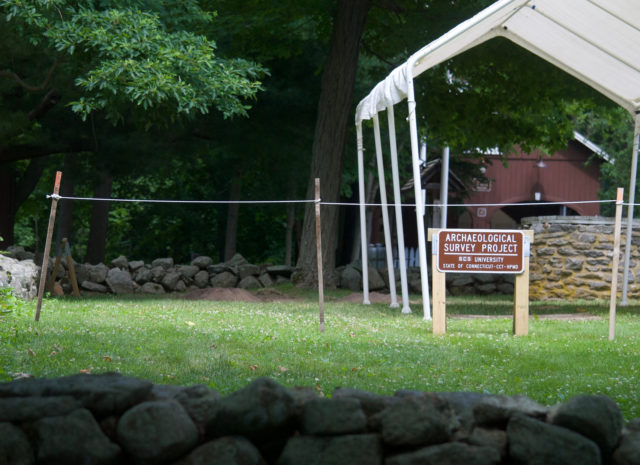
You can wander the grounds without paying admission, but if you want to go indoors, there’s a fee.
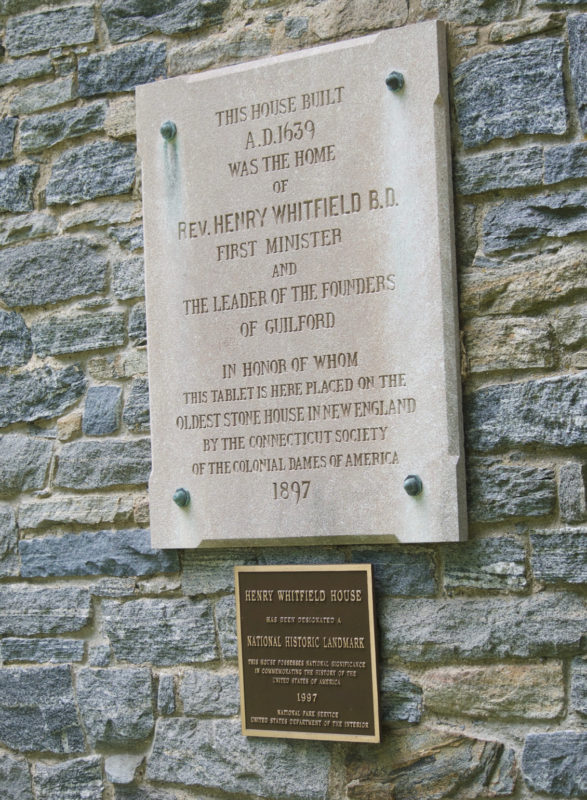
There are also a bunch of rules to follow outdoors, and if you had trouble staying off the jetty, this might also prove a challenge.
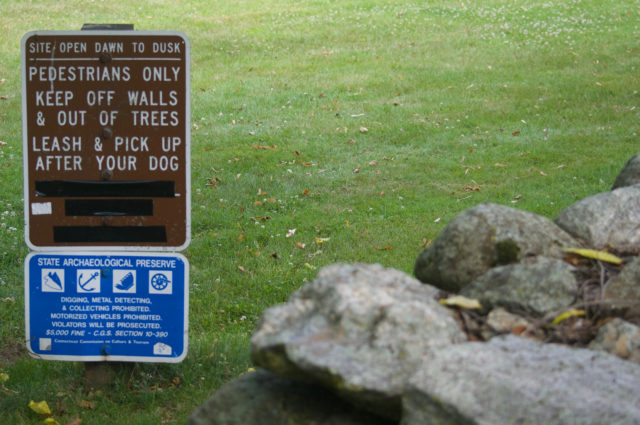
They have parking for bicycles and segways, in case you were wondering.
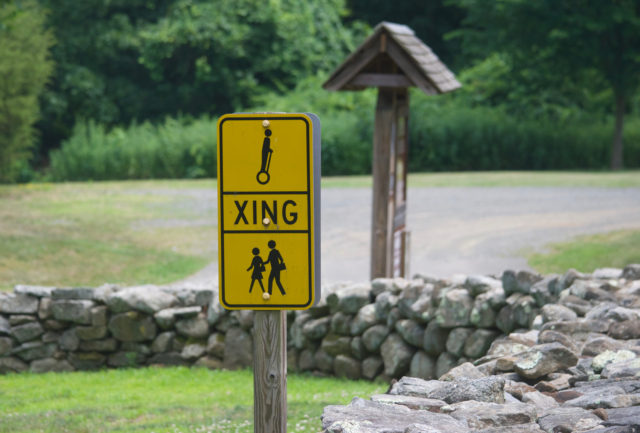
If you continue north on Whitfield Street, you’ll come to the Guilford Green in about ten minutes; probably sooner if you’re visiting when the jungle humidity does not force you to move at an ambling pace.
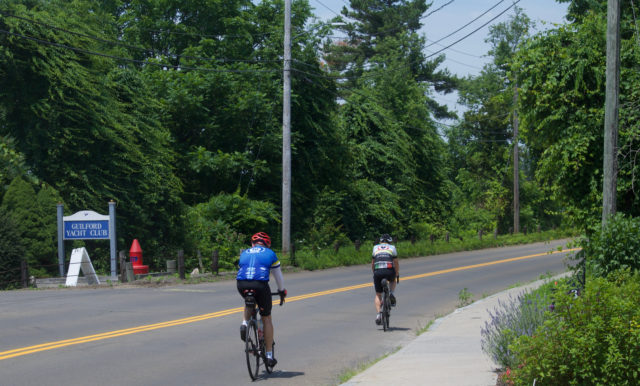
The Green is a 7.7 acre square that hosts the Guilford Art Center Craft Expo (July), Shoreline Jewish Festival (August), Guilford Performing Arts Festival (September), and probably other festivals that are not on my radar. It’s also a fine place to sit in the shade while eating lunch.
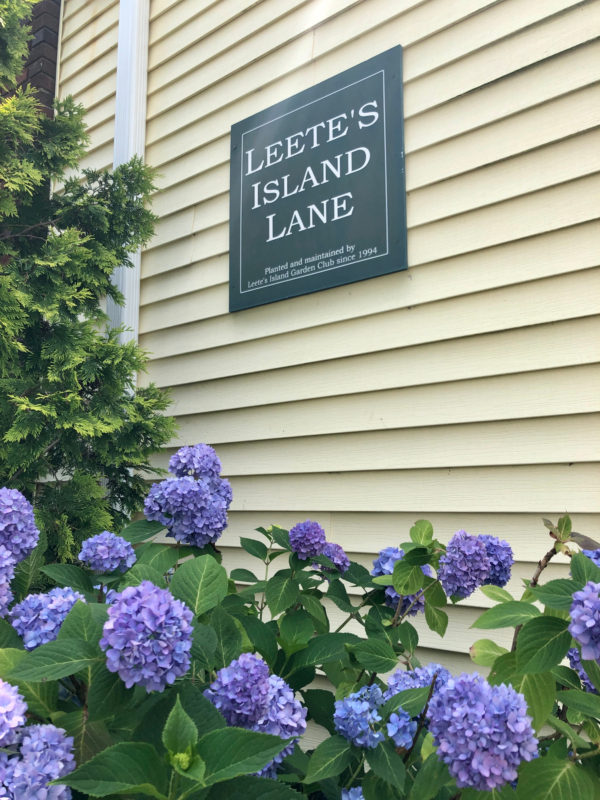
Looking for food? You’re not stuck with one lackluster pizza shop and one place that’s too upscale to welcome you in. Cilantro has coffee, pastries, and sandwiches. The Marketplace has a similar selection. Ballou’s is a wine bar. There are about six other options in this small area, and both a taco and juice truck on the green. Plus doughnuts. Plus a vegan bakery, which has regular meal-type foods too, not just dessert.
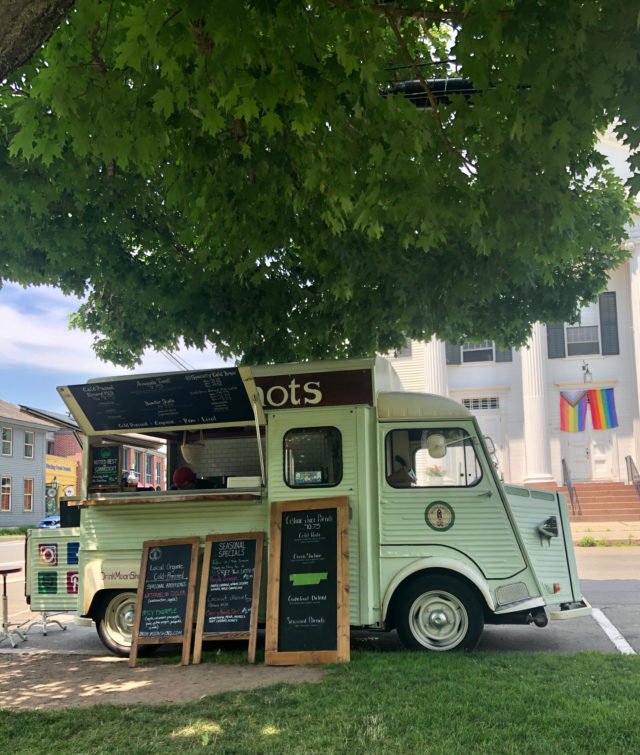
There are a few sidewalk/patio tables, but depending on how much formality you require, it can be just as easy to take a meal to the town green and sit on a bench or the grass.
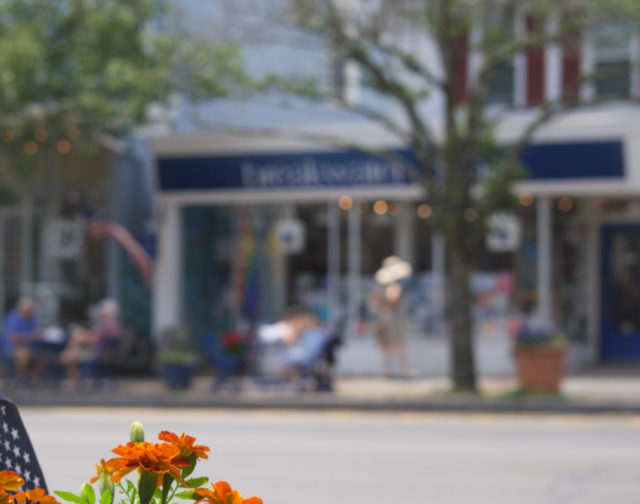
Instead of constantly looking at your phone map to see what to expect where, try roaming slowly on the streets around the green, going down alleys and driveways, and looking at the historical plaques as you go.
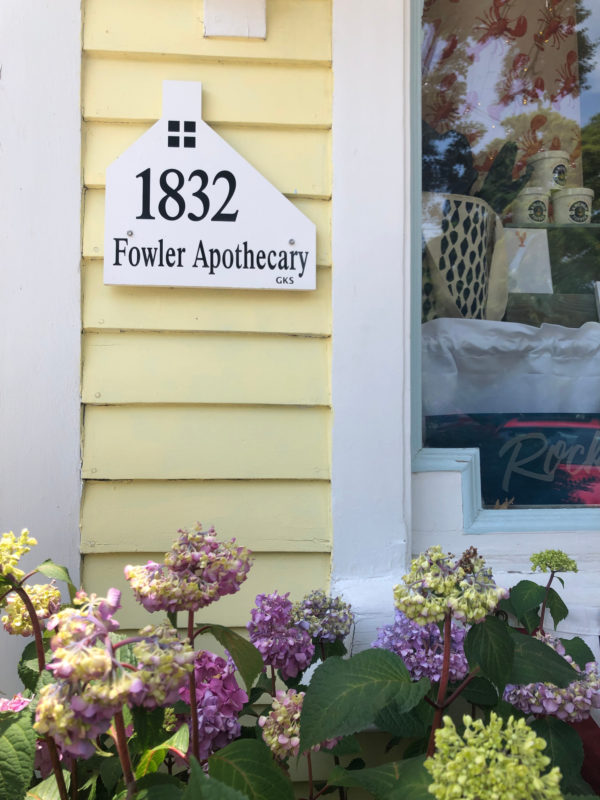
One sign, explaining how cars and trucks were forbidden from being in the driveway, made me curious about what was deemed important enough to protect.
On one side, a restaurant.
On another, a beautiful, red barn.
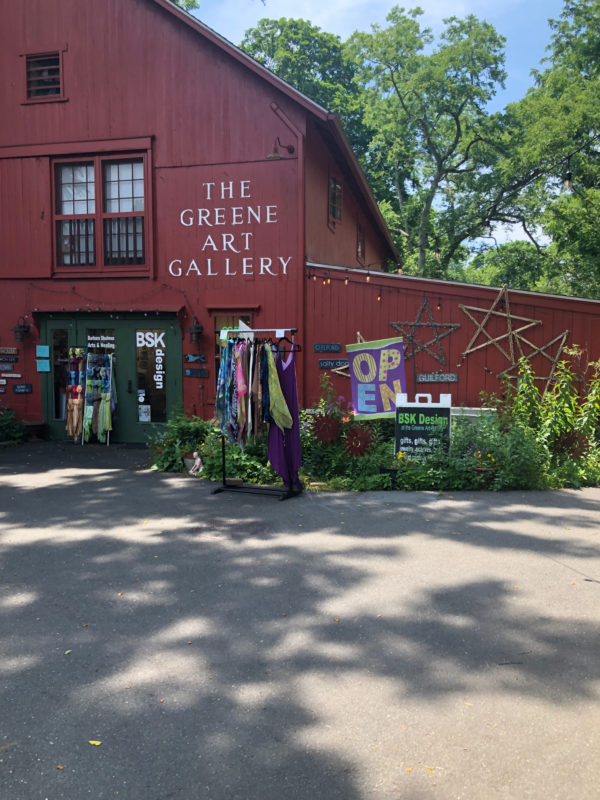
BSK Design (Barbara Shulman-Kirwin) is currently using the space to exhibit, mostly, the artist’s fused dichroic glass jewelry, Judaica, and other artwork.
You know how some upscale stores go for a faux minimalist vibe by displaying like three objects? This shop caters instead to those who appreciate walls glittering rainbows of earrings and pendants. It’s a welcoming space. Nobody follows you around like you’re casing the joint.
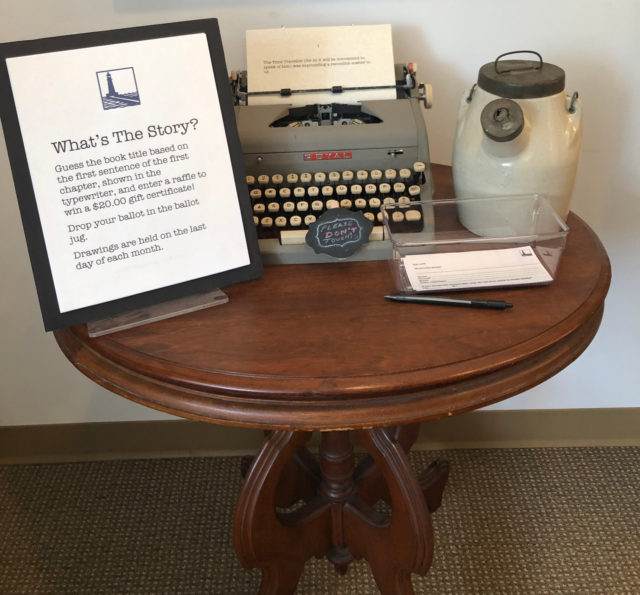
Down the block, Breakwater Books, marking its 50th year, requires a visit. Now with its fourth owners, the store has mostly new books, some used, and a sizable selection of LGBT and nature/environment books. It’s not a sprawling megastore, but I challenge you to not find a half dozen books you want to take home. There’s also a Little Free Library in a nook directly outside the store.
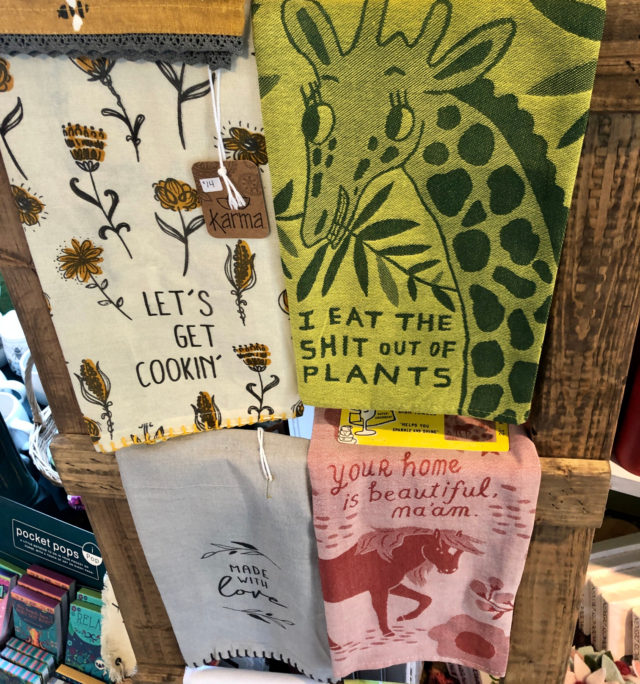
As for the other shops, they’re a mix of funky and “just pretentious enough.” Salty dishcloths are having a moment, it seems.

Around the green is where you’ll find multiple churches, the town hall, and the Guilford Free Library. The library has more benches outside if you need a place to sit and dump the sand out of your sneakers. Venture indoors to see whatever art is on display; this is also where to find a public restroom and water fountain. They get a special shout out for having two sets of bag hooks on the bathroom door. I did not interview any librarians about why this was the case, but it means people of all heights or who can not reach very high, can hang up their bags, and that those of us dragging around a camera bag and tote bag don’t have to cram everything on one hook and hope it doesn’t fall. One more point on the side of redesigning the world so that it serves more than merely able-bodied, tall dudes.
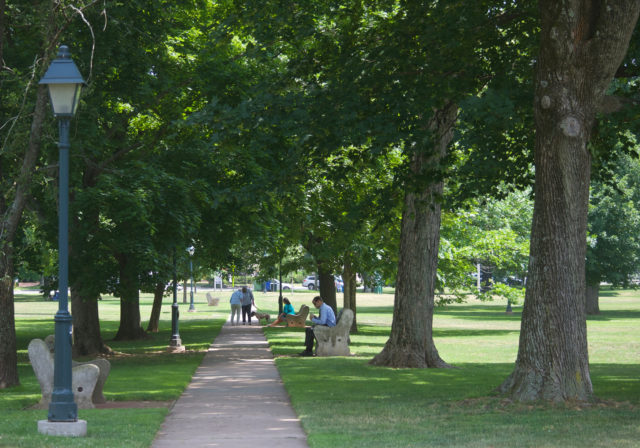
A fun game to play in town is to count how many rainbow flags you see. It seems higher than average, or maybe more noticeable because there isn’t the visual clutter of billboards and other signs everywhere.
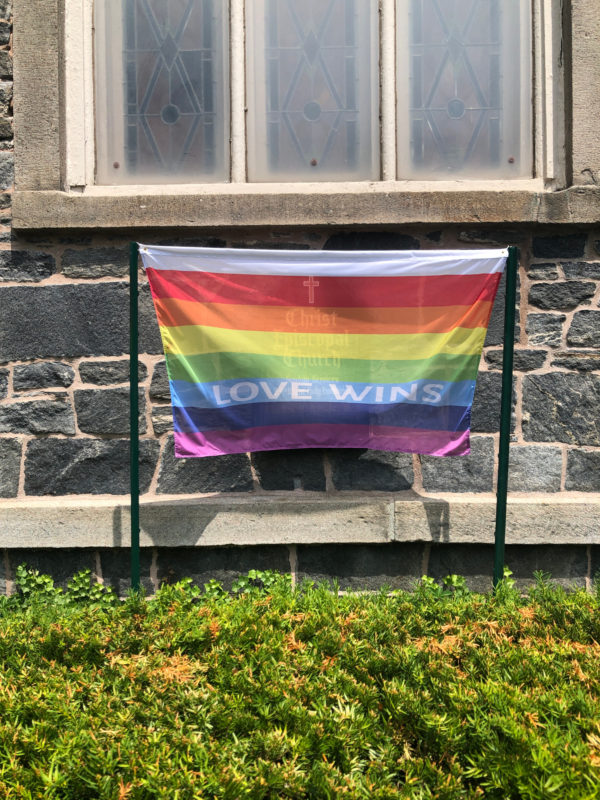
One of the perks of traveling at a lower speed is that you’re able to enjoy the sights without fracturing your attention. There isn’t the constant nagging of GPS to make a turn you’re afraid to miss so you can quickly reach a destination and then race through your time there. On foot, you can take notice of so much more.
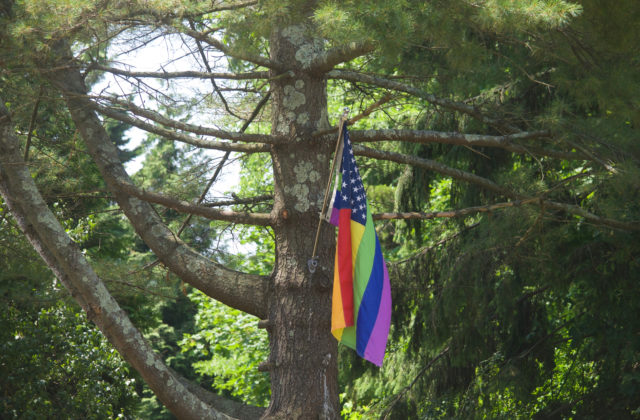
Seeing what people do with their homes and yards is a favorite part of traveling, especially in places that embrace personality.
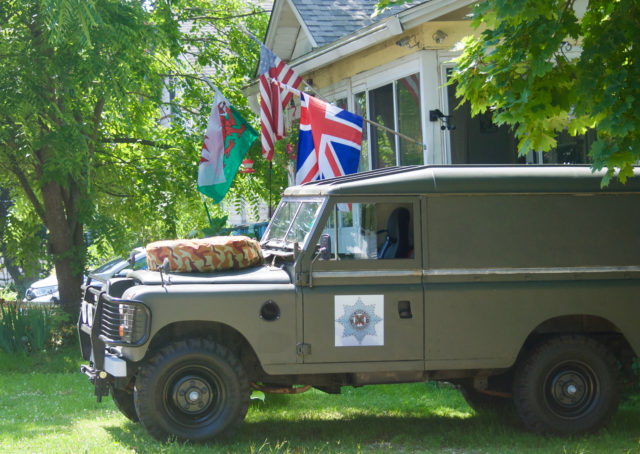
Besides rainbow flags, there’s a noticeable density of Little Free Libraries in walking distance on the train station. In addition to the one right outside of the bookstore, there’s one on the road leading to Chittenden Park and Jacob’s Beach. There are three on Old Whitfield Street, north of the train station.
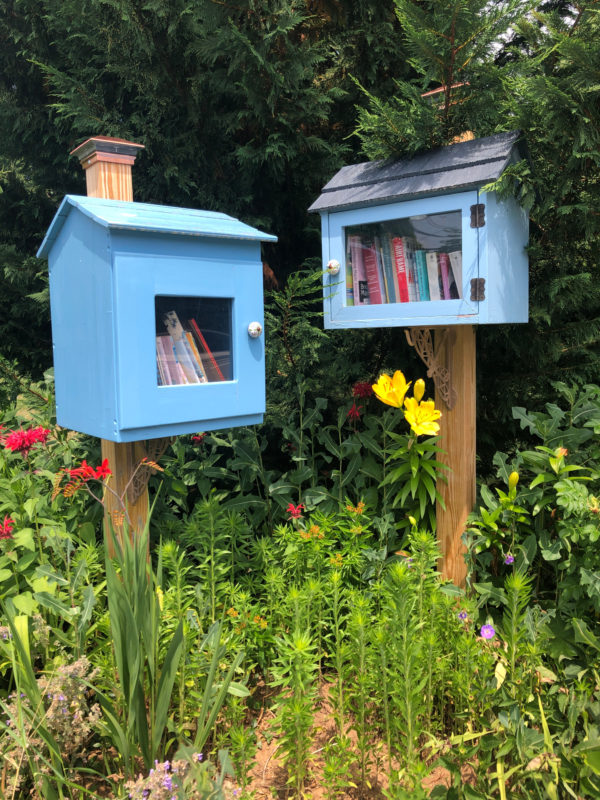
Also on Old Whitfield, both sides of the station, are a few model yards.
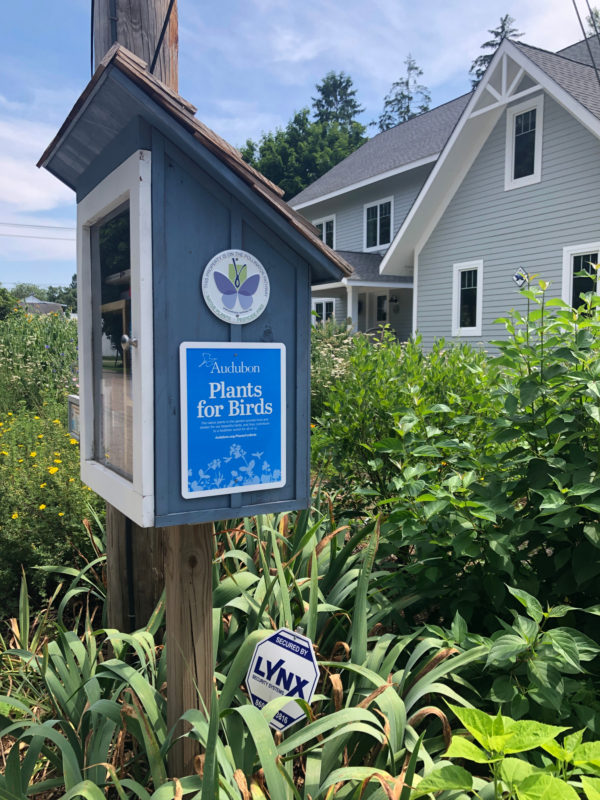
If you want more birds, butterflies, and bees, you have to give them what they want. This means meadows and native species. Creating these habitats is practicing the whole “maintaining the character of the community” in an actual, non-euphemistic way.
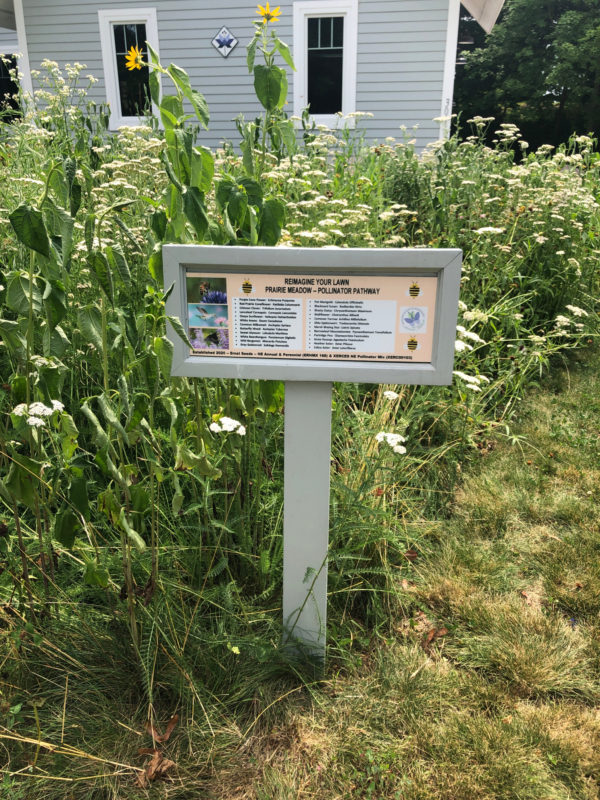
Last month, there was a self-guided Pollinator Pathways of Guilford open garden tour. While the event has passed and it might not be the best idea to roam through people’s yards unannounced, you can see the site addresses and admire from a respectful distance (or, I suppose, knock on the door and ask to take a closer look).
In September, author Doug Tallamy, who’s written on native plant species and wildlife, will be giving a talk in Guilford, so if you were looking for another reason to head into town, there it is.
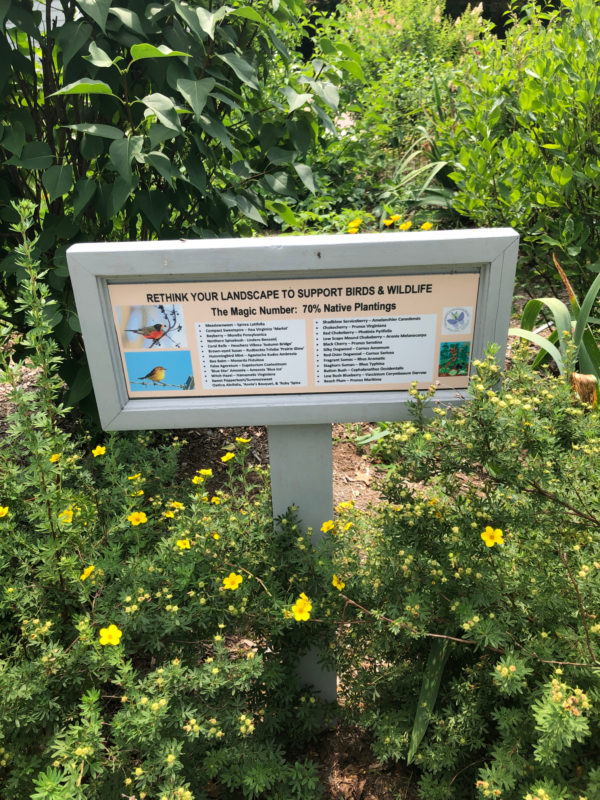
While there’s plenty to see and do by simply walking in the areas I’ve described, bringing a bicycle would expand the range for those who don’t feel safe walking on rural roads that lack sidewalks.
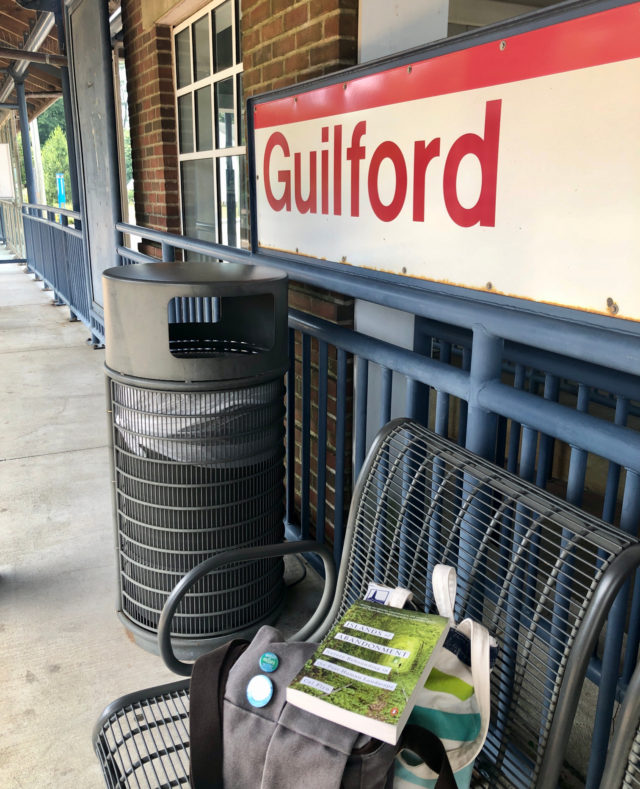
To visit Guilford, exit the Guilford Station train stop on Shore Line East; if coming from the Hartford Line, you can make the connection to Shore Line East from both New Haven State Street and New Haven Union Stations.
There is no ticket vending machine and no restroom at the Guilford Station. Rather than a large screen, look for a posted piece of paper (see below) to tell you which track to use. Check the Shore Line East twitter account for delay or track change information. Bicycles are allowed on Shore Line East and Hartford Line CTrail trains; Amtrak allows bikes but there’s a fee.

The 201 CTtransit bus stops on the north side of the Guilford Green (among other places) and can connect you to New Haven and Branford to the west, and Madison Center (to the east) [where at Scranton Gazebo, you can get on the 645 bus and ride to Hammonasset Beach in Madison.]
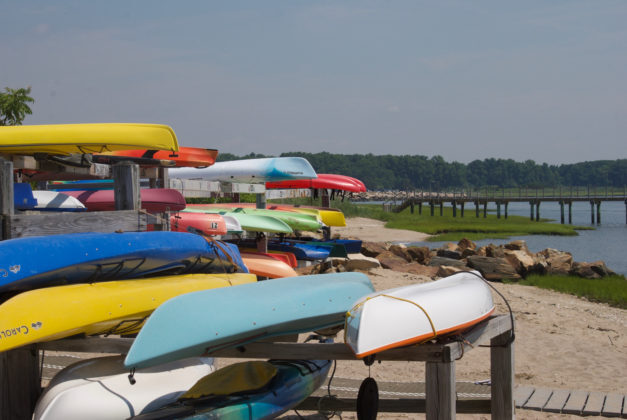
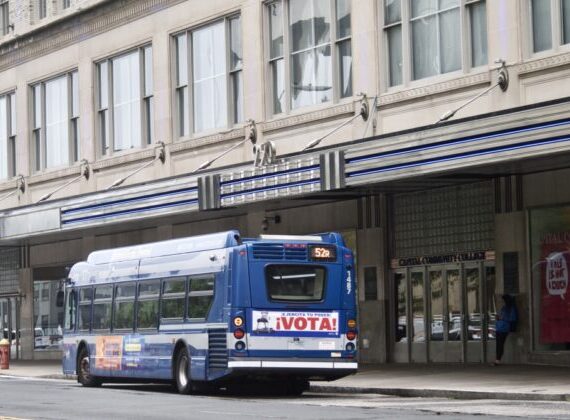

Richard
What a wonderful article. So beautifully written and the photos are so inviting that I want to jump on the train and go. I would love to wander in Guilford.
Here is a bit of ourstories from the town of Guilford.
“John Winthrop, the first governor of the Massachusetts Bay Colony, supported the execution of William Plaine, in the New Haven Colony, in 1646. In his History of New England, Winthrop writes:
“Plaine of Guilford being discovered to have used some unclean practices, upon examination and testimony, it was found, that being a married man, he had committed sodomy with two persons in England, that he had corrupted a great part of the youth of Guilford…And indeed it was horrendum facinus [a dreadful crime] and he a monster in human shape, exceeding all human rules and examples, that ever had been heard of, and it tended to the frustrating of the ordinance of marriage and the hindering of the generation of mankind.”
William Plaine was the first person to be executed in Guilford Plantation. On 06 June 1646 he was hanged for sodomizing and corrupting the morals of more than 100 young boys. Rumors at the time indicated that he had fled to the American colonies to escape prosecution for similar charges in England.” I have always loved this part, had corrupted a great part of the youth of Guilford by masturbations … above a hundred times.” When asked about such “filthy practice,” Plaine “did insinuate seeds of atheism, questioning whether there was a God.”
I once had a map of the colony town of Guilford that showed where Plaine had lived and who (John Parmelee) through marriage gained more ground around the town green. Did he point the finger at Plaine for gain?
Tom
Adding this to a summer train+trip list.
I had another article popped up in my feed about New Fairfield getting upset that people were walking a state park within their borders.
“For years, town officials have called it a safety concern and tried to restrict people walking along the road to get to the park — either by asking the state to restrict walk-ins, or cracking down on illegal parking in town.”
Asking the state to restrict walk-ins, One word, Fuming.
I am working hard to diversify my transportation modes, but like how could they work to ban walking into a park? Thanks to bike twitter, free bus fares, and just realizing I’m happier when I’m commuting not in a car, I have started to explore a lot more of the Hartford region and expanding throughout the state many times car free!
https://www.newstimes.com/news/article/Crowds-at-Squantz-Pond-State-Park-spark-safety-17286112.php
Kerri Provost
I’d be fuming if I weren’t laughing so hard at this. They’re mad about people parking somewhere else and then walking along a road, which IS dangerous, but the sentiment fits right up there with West Hartford’s “thoughts and prayers” after its own terrible road design contributes to people’s deaths. The article describes the road as “a busy road with little- to- no- shoulder” and describes town officials as whining about how “enforcement” hasn’t helped.
IF ONLY THERE WERE SOLUTIONS FOR THIS THAT DID NOT INVOLVE BANNING OTHER MODES!
Option 1: Run a shuttle to the park from one or two larger parking lots and transit centers nearby
Option 2: Create a temporary walkway in area with cones and sawhorses on weekends and busy times.
Option 3: Create a permanent walkway along Route 39
Not an option? This backwards attempt to crackdown on people accessing a park outside of cars.
Beth Rose
Great article! Reminds me I worked in Fairfield for several years before realizing that Beach Road actually led to…the beach.